Fruits That Start With D: A long list of fruits beginning with the letter D for all your cooking, baking, and trivia needs! You'll see familiar names like dates and dragonfruit as well as some new and unique fruit varieties like dangleberries and dinosaur eggs! Keep reading to learn about all the amazing fruits that start with D!
Fruits Beginning With The Letter D
Fruits are an essential part of a healthy and balanced diet, and there are many varieties to choose from. One letter of the alphabet that is home to a diverse array of fruits is the letter "D".
From tropical delicacies to hearty northern fruits, the range of fruits that start with "D" is quite impressive. Some of these fruits are well-known and widely available, while others are more uncommon and less familiar to the general public.
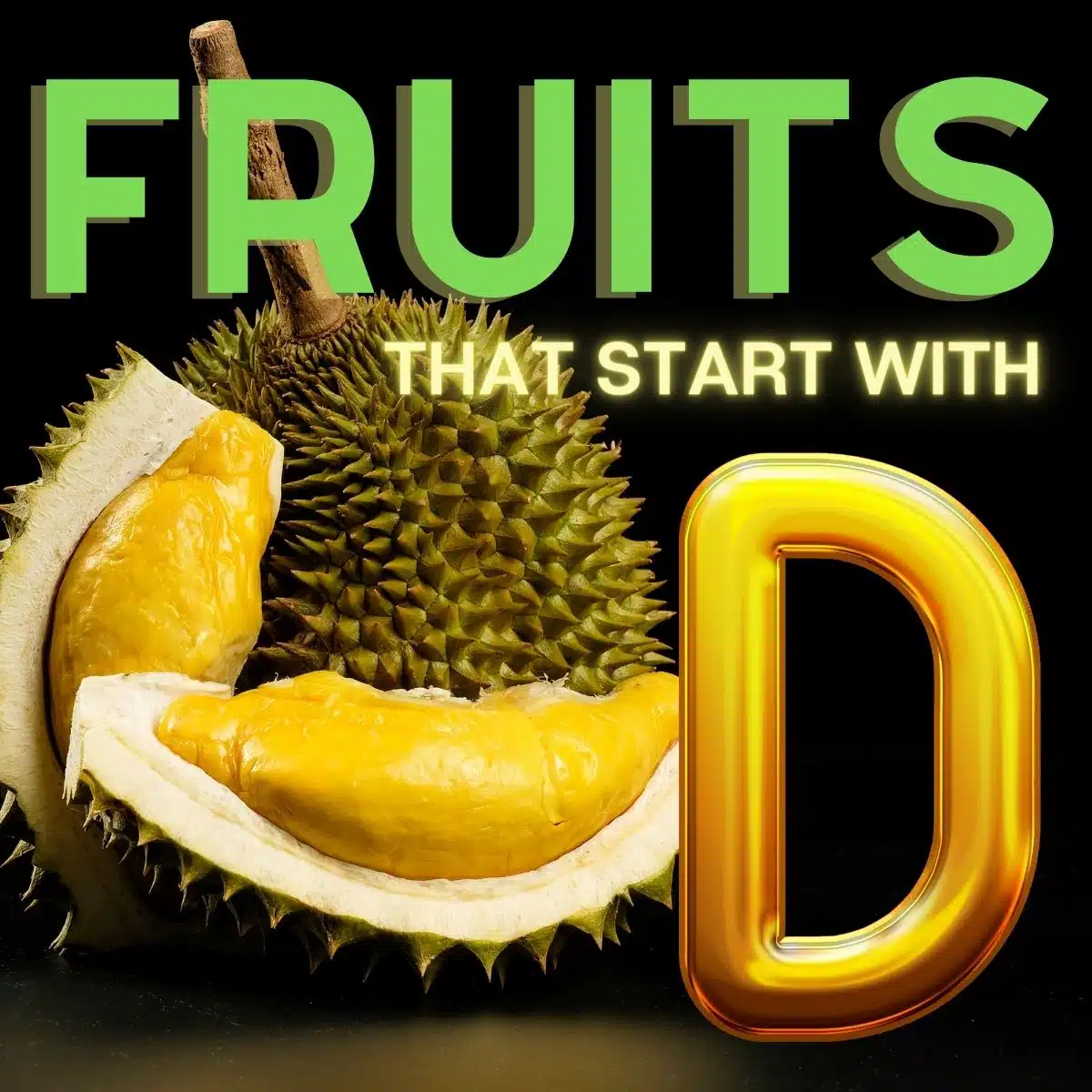
Jump to:
- Fruits Beginning With The Letter D
- 1. Dabai Fruit
- 2. Dabinett Apple
- 3. Dalice Apple
- 4. Damson Plums
- 5. Dangleberry
- 6. D'Anjou Pear
- 7. Darling Plum
- 8. Darwin's Barberries
- 9. Date Plums
- 10. Dates
- 11. Davidson's Plums
- 12. Dekopon
- 13. Desert Banana
- 14. Desert Fig
- 15. Desert Lime
- 16. Desert Quandong
- 17. Dewberry
- 18. Diablo Pear
- 19. Dinosaur Eggs
- 20. Discovery Apple
- 21. Double Coconut
- 22. Dracontomelon
- 23. Dragonfruit
- 24. Duku Fruit
- 25. Durian
- 26. Dutch Holland Pear
- 📖 Recipe Card
- 26 Fruits That Start With D: Pear Crisp (+More Tasty Fruits To Use In Recipes!)
- 💬 Comments & Reviews
Regardless of their popularity, fruits that start with the letter "D" can be enjoyed in a variety of ways, both as a healthy snack and as an ingredient in a range of culinary dishes. Whether you are looking for a sweet and juicy fruit to enjoy on its own, or a flavorful ingredient to add to your favorite recipes, this complete list of fruit that starts with "D" is sure to meet your needs!
1. Dabai Fruit
Dabai fruit, also known as black olive fruit, is a small, round fruit that is native to Malaysia and Indonesia. The fruit has a shiny black skin and a fleshy, greenish-yellow pulp that surrounds the large seed.
Dabai fruit is often eaten fresh and is enjoyed for its unique flavor, which is often described as a mix of avocado and olives. The fruit is also used in traditional cuisine in Malaysia, particularly in the state of Sarawak, where it is considered a local delicacy.
Dabai fruit is a relatively uncommon fruit outside of Southeast Asia, but for those who have the opportunity to try it, it is a unique and flavorful experience that is worth exploring.
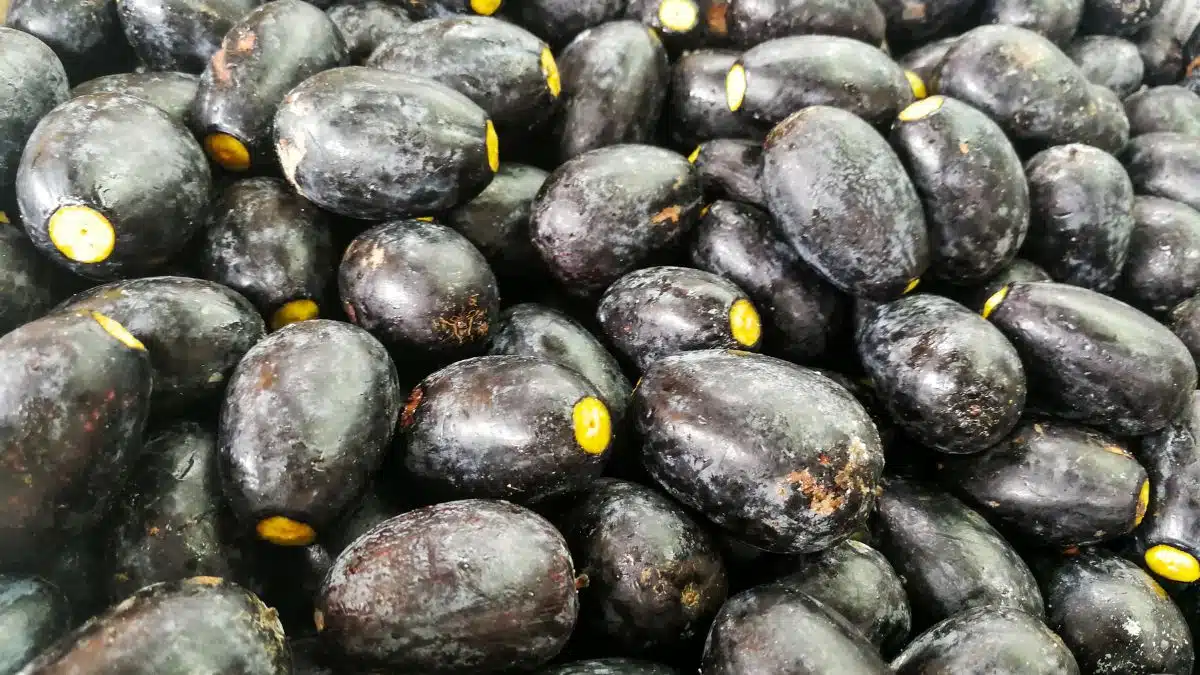
2. Dabinett Apple
Dabinett apple is a type of cider apple that is often used for making hard cider. The fruit is medium-sized and has greenish-yellow skin with a reddish blush. The flesh is firm and slightly acidic, with a unique flavor that is often described as nutty or spicy.
Dabinett apples are typically harvested in the fall and are often blended with other apple varieties to make complex full-bodied ciders. The fruit is also enjoyed as a dessert apple and is known for its crisp texture and unique flavor.
Overall, the Dabinett apple is a valued variety in the world of cider-making and is enjoyed by many for its distinct flavor and versatility in culinary applications.
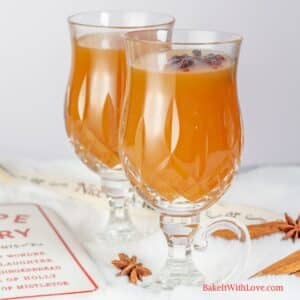
3. Dalice Apple
The Dalice apple is a relatively new variety of apples that was developed in New Zealand. The fruit is medium-sized and has a distinctive red-orange skin with yellow striping. The flesh is crisp and juicy, with a balanced flavor that is both sweet and slightly tart.
Dalice apples are typically harvested in the fall and are enjoyed as a dessert apple, or used in culinary applications, such as in pies and other baked goods. The fruit is also known for its long shelf life and its ability to retain its texture and flavor over time.

4. Damson Plums
Damson plums are a type of small, oval-shaped plum that is typically dark blue or purple in color, with smooth skin that has a slightly tart flavor. The fruit is often used in a variety of culinary applications, such as in jams, jellies, and baked goods, and is also used to make alcoholic beverages, such as damson gin.
Damson plums are typically harvested in the late summer and early fall and are known for their distinctive flavor and aroma. The fruit is often enjoyed for its slightly tart and sweet taste, and its firm, juicy texture.

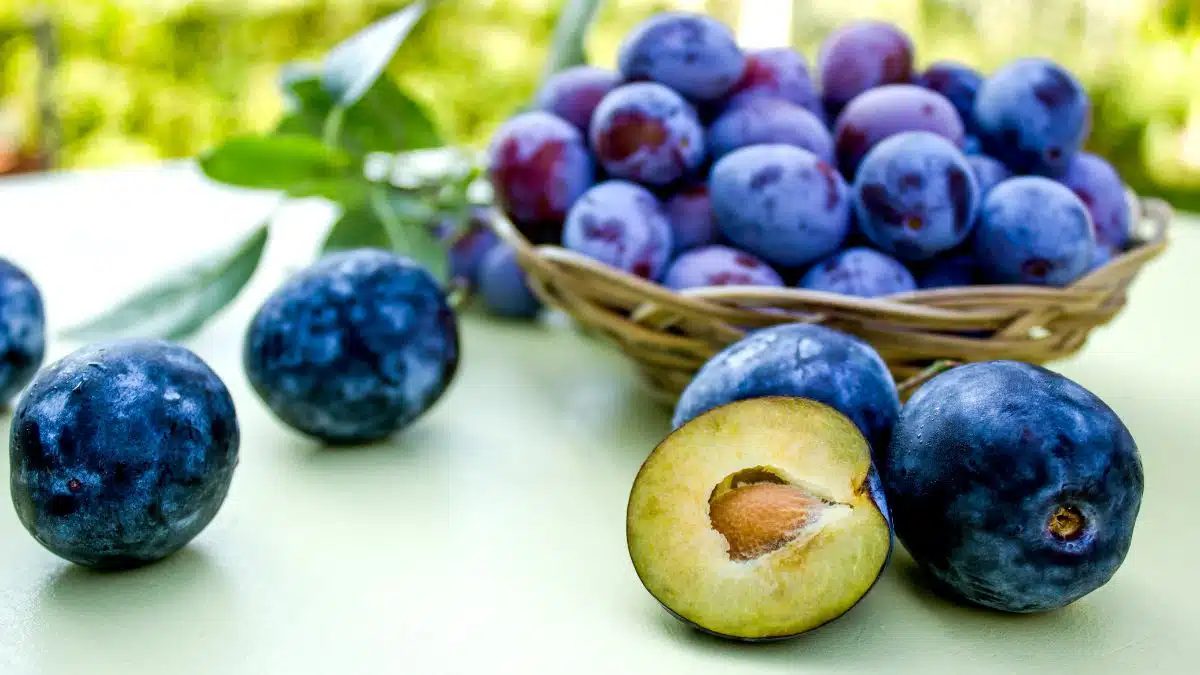
5. Dangleberry
Dangleberry, also known as blue huckleberry or mountain blueberry, is a small, blue-black berry that is native to North America. The fruit is typically found growing in mountainous regions, particularly in the Pacific Northwest, and has a slightly tart, sweet flavor.
Dangleberries are often eaten fresh or used in a variety of culinary applications, such as in pies, jams, and other desserts. The fruit is also used in traditional medicine to treat a range of ailments, including digestive problems and inflammation.
Overall, the dangleberry or blue huckleberry is a unique and flavorful fruit that is enjoyed by many in the mountainous regions of North America.
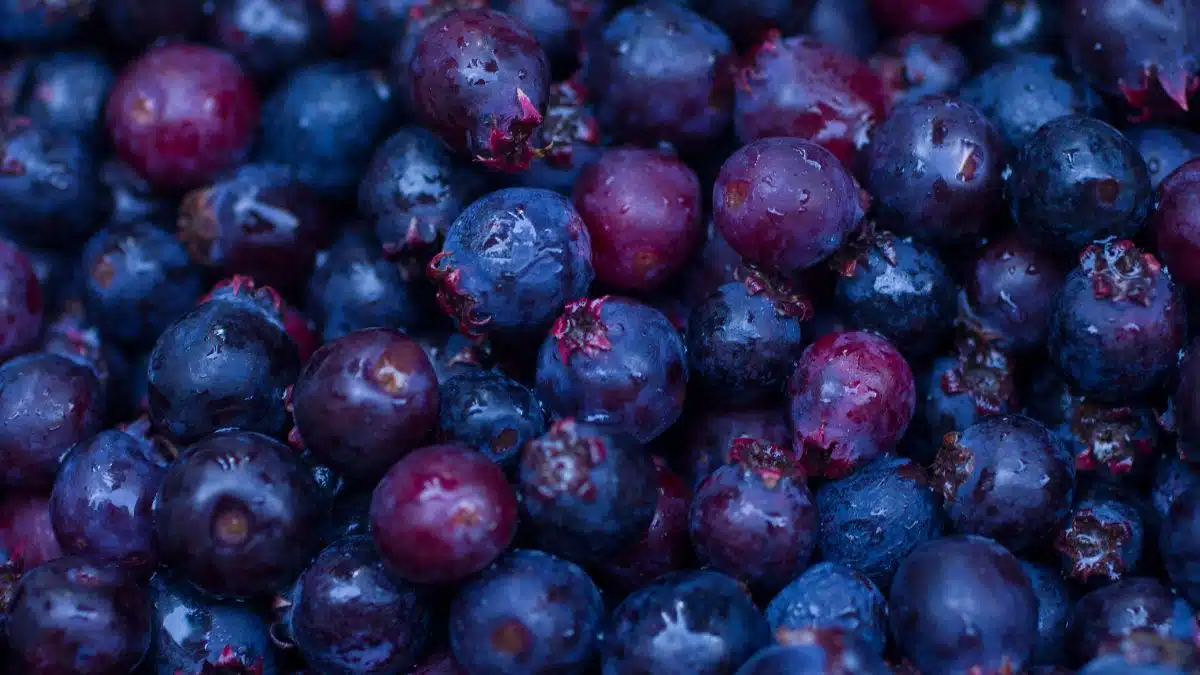
6. D'Anjou Pear
D'Anjou pears, also known as Anjou pears, are a variety of pear that is typically medium to large in size and has a distinctive egg shape. The fruit has a green or yellow skin, with firm and juicy flesh that is slightly sweet and fragrant.
D'Anjou pears are often enjoyed as fresh eating pears but are also commonly used in cooking and baking. The fruit is versatile and can be used in a variety of culinary applications, such as in salads, pies, and other desserts.
D'Anjou pears are typically harvested in the fall and winter months and are known for their long shelf life. The fruit can be stored for several months and is often enjoyed as a late-season pear.

7. Darling Plum
The darling plum is from the Reynosia septentrionalis, a fruit tree native to tropical regions of the Americas. The fruit is small and has a distinctive, round shape with a reddish-purple color.
Darling plum is typically eaten fresh and has a sweet and slightly tangy flavor.
8. Darwin's Barberries
Darwin's barberries are a type of shrub that is native to Chile and Argentina. The fruit of the plant is a small, round berry that is typically dark red or purple in color.
The fruit is used in culinary applications, particularly in jams, jellies, and other desserts. However, Darwin's barberries are not widely known outside of South America and may be difficult to find in other parts of the world.
>>>>See all of my recipes here<<<<
9. Date Plums
Date plums, also known as wild plums, Caucasian persimmon, date-plums, or lilac persimmon, are a type of small, round fruit that is native to Europe and Asia. The fruit is typically purple or blue in color, with a slightly tart flavor and firm, juicy flesh.
Their taste is described as a combination of, or a cross between, dates and plums, which is where the name originates.
Date plums are often eaten fresh, and are also used in culinary applications, such as in jams, jellies, and baked goods. However, the fruit is not as well-known as other types of plums and may be more difficult to find in some regions.
10. Dates
Dates are a type of fruit that comes from the date palm tree, which is native to the Middle East and North Africa. The fruit is typically tiny and oblong in shape, with sweet, chewy flesh and a single seed at the center.
Dates are often enjoyed as a sweet and nutritious snack and are also commonly used in culinary applications, such as in baked goods and desserts. They are widely available in many regions and can be enjoyed in a variety of ways, both as a snack and as an ingredient in a range of culinary dishes.
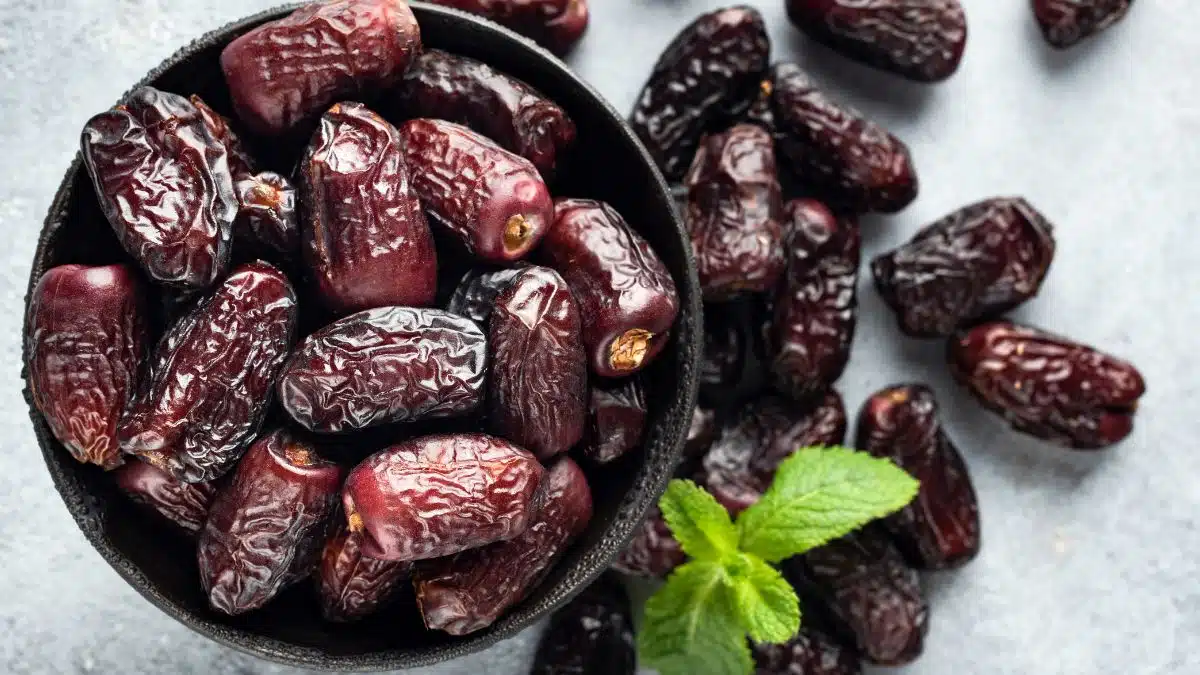
11. Davidson's Plums
Davidson's plums are a type of small fruit that is native to Australia. The fruit is typically dark purple or black in color, with a slightly tart flavor.
Davidson's plums are often used in culinary applications, particularly in jams, jellies, and other desserts. However, the fruit is not as well-known outside of Australia and may be difficult to find in other parts of the world.
12. Dekopon
Dekopon, also known as Shiranui, is a hybrid citrus fruit that is believed to have originated in Japan. The fruit is larger than most mandarins and has a distinctive shape that is slightly flattened on the top and bottom.
Dekopon is known for its sweet and juicy flesh, which is easy to peel and has few seeds. The fruit has a bright orange color and is often enjoyed as a fresh-eating citrus fruit.
Overall, dekopon is a unique and flavorful fruit that is enjoyed by many for its distinct flavor and texture. While the fruit is still relatively new to many parts of the world, it is becoming increasingly popular and is now grown in several countries, including the United States, Australia, and Spain.
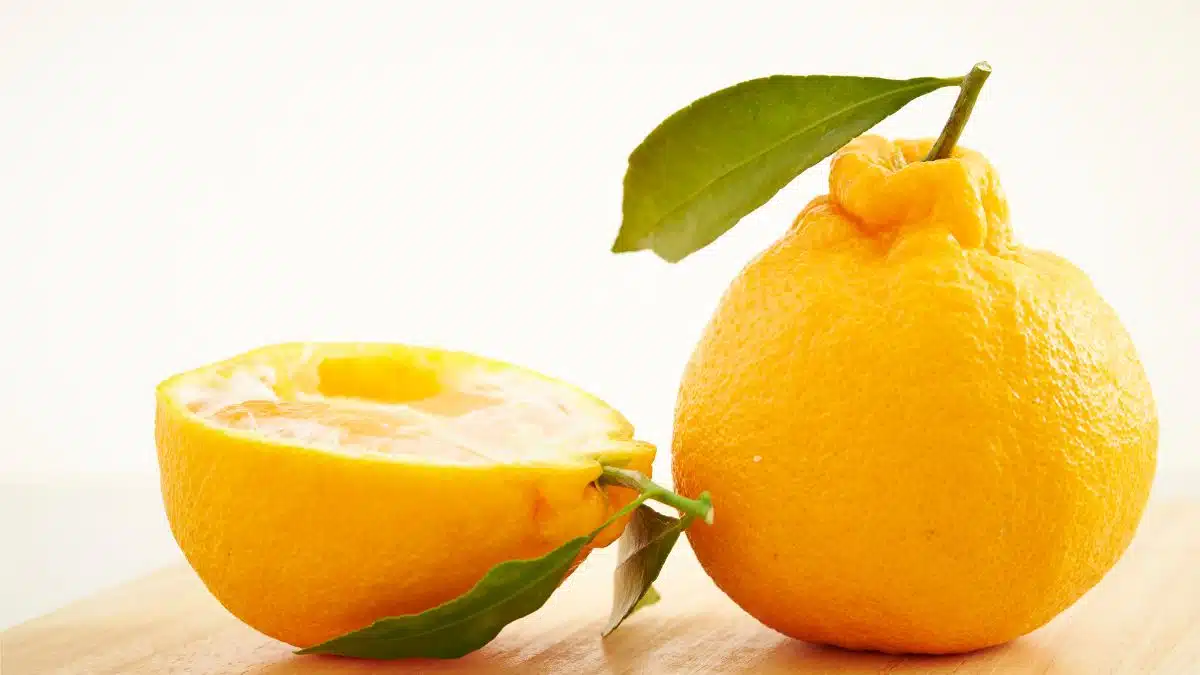
13. Desert Banana
Desert banana, also known as Yawalapiti, is a type of fruit that is native to the Amazon rainforest in South America. The fruit is typically small and elongated in shape, with green or yellow skin and a slightly sweet, custard-like flesh.
The fruit is also used in culinary applications, particularly in baked goods and desserts. However, the fruit is not as well-known outside of South America and may be difficult to find in other parts of the world.
14. Desert Fig
Desert figs, also known as wild figs, are a type of fruit that is native to arid regions of the world, particularly in the Middle East and North Africa. The fruit is typically small and oblong in shape, with slightly sweet and chewy flesh.
Desert figs are often eaten fresh and are also commonly used in culinary applications, such as in jams, jellies, and baked goods. They are widely available in many regions and can be enjoyed in a variety of ways, both as a snack and as an ingredient in a range of culinary dishes.
15. Desert Lime
Desert lime is a type of small citrus fruit that is native to Australia. The fruit is typically green or yellow in color, with a slightly tart and tangy flavor that is similar to other types of limes.
Desert limes are often used in culinary applications, particularly in savory dishes such as marinades, dressings, and sauces. While the fruit is still relatively new to many parts of the world, it is becoming increasingly popular and is now grown in several countries, including the United States and parts of Europe.
16. Desert Quandong
Desert quandong, also known as wild peach or Santalum acuminatum, is a type of small fruit that is native to arid regions of Australia. The fruit is typically round or oblong in shape, with a slightly tart and tangy flavor.
Desert quandongs are often used in culinary applications, particularly in jams, jellies, and baked goods. However, the fruit is not as well-known outside of Australia and may be difficult to find in other parts of the world.
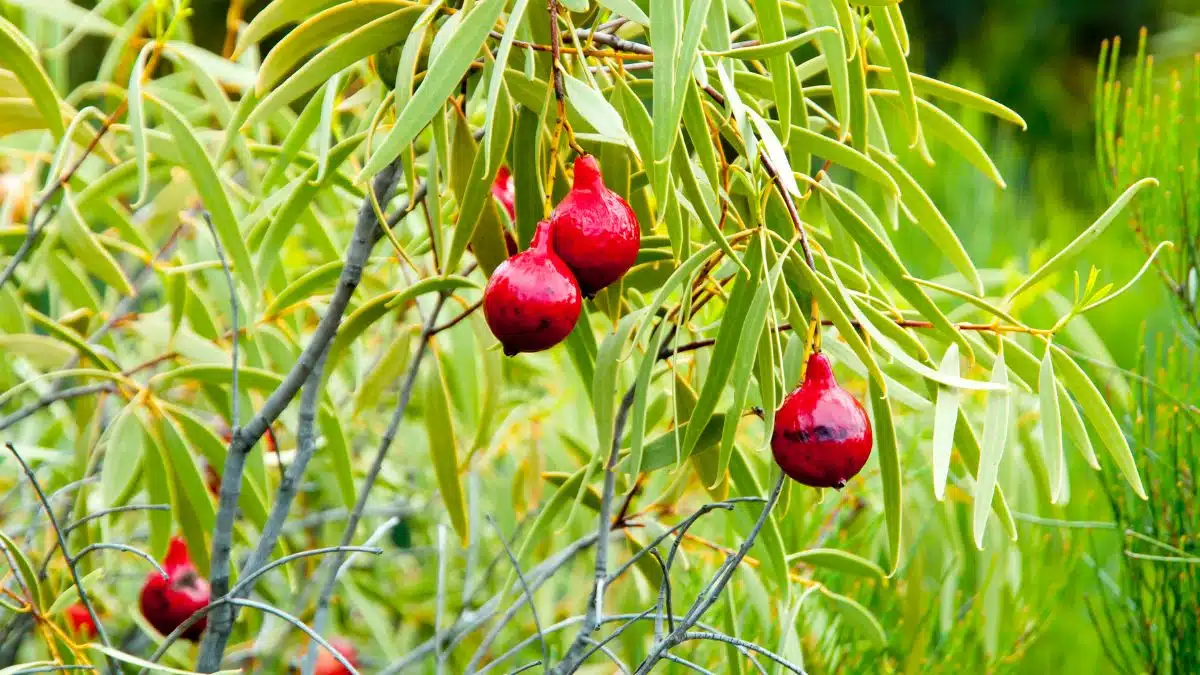
17. Dewberry
Dewberry is a type of small, edible berry that is related to the blackberry. The fruit is typically black or dark purple in color, with a sweet and slightly tart flavor.
Dewberries are often enjoyed fresh and are also commonly used in culinary applications, such as in jams, jellies, and baked goods. This fruit is not as well-known as other types of berries, but it is widely available in many parts of the world and can be enjoyed in a variety of ways.
18. Diablo Pear
Diablo pear is a type of pear that is known for its unique appearance and flavor. The fruit is typically medium to large in size, with dark purple or maroon skin and crisp, juicy flesh.
Diablo pears are often used in culinary applications, particularly in salads and other dishes that require a sweet and savory flavor. The fruit is also sometimes used in jams and jellies.
The diablo pear is not as well-known as other types of pears and may be more difficult to find in some regions.
19. Dinosaur Eggs
Dinosaur Eggs, also known as Pluots, are a type of fruit that is a hybrid of a plum and an apricot. The fruit is typically round in shape, with a slightly fuzzy skin that ranges in color from green to red. The flesh of the fruit is juicy and sweet, with a flavor that is similar to both plums and apricots.
Dinosaur Eggs/Pluots are often eaten fresh and are also commonly used in culinary applications, such as in baked goods and desserts. The fruit is known for its unique and complex flavor profile, which can vary depending on the specific variety.
They are widely available in many regions and can be enjoyed in a variety of ways, both as a snack and as an ingredient in a range of dishes.
20. Discovery Apple
Discovery apples are a type of apple that is known for its bright red and yellow skin, which is often streaked with green. The fruit is medium to large in size and has crisp, juicy flesh with a slightly tart flavor.
Discovery apples are often eaten fresh and are also commonly used in culinary applications, such as in pies, sauces, and other dishes. The fruit is typically available in the late summer and early fall and is popular in many regions around the world.
Overall, Discovery apples are a flavorful and versatile fruit that is enjoyed by many for their unique appearance and taste. They are widely available in many regions and can be enjoyed in a variety of ways, both as a snack and as an ingredient in a range of culinary dishes.
21. Double Coconut
Double coconut, also known as Lodoicea maldivica or sea coconut, is a type of large seed that is produced by a palm tree of the same name. The fruit is notable for its large size, which can range from 12 to 20 inches in length and up to 66 pounds in weight.
While the double coconut is not a true nut, it is often referred to as the "coco de mer" and is valued for its unique appearance and cultural significance. The fruit is endemic to the Seychelles, where it is protected by law and is considered a national symbol.
Overall, the double coconut is a rare and unusual fruit that is known for its distinctive appearance and cultural importance. While it is not commonly used in culinary applications, as it is protected from being picked and/or eaten, it is highly valued for its beauty and ecological role.
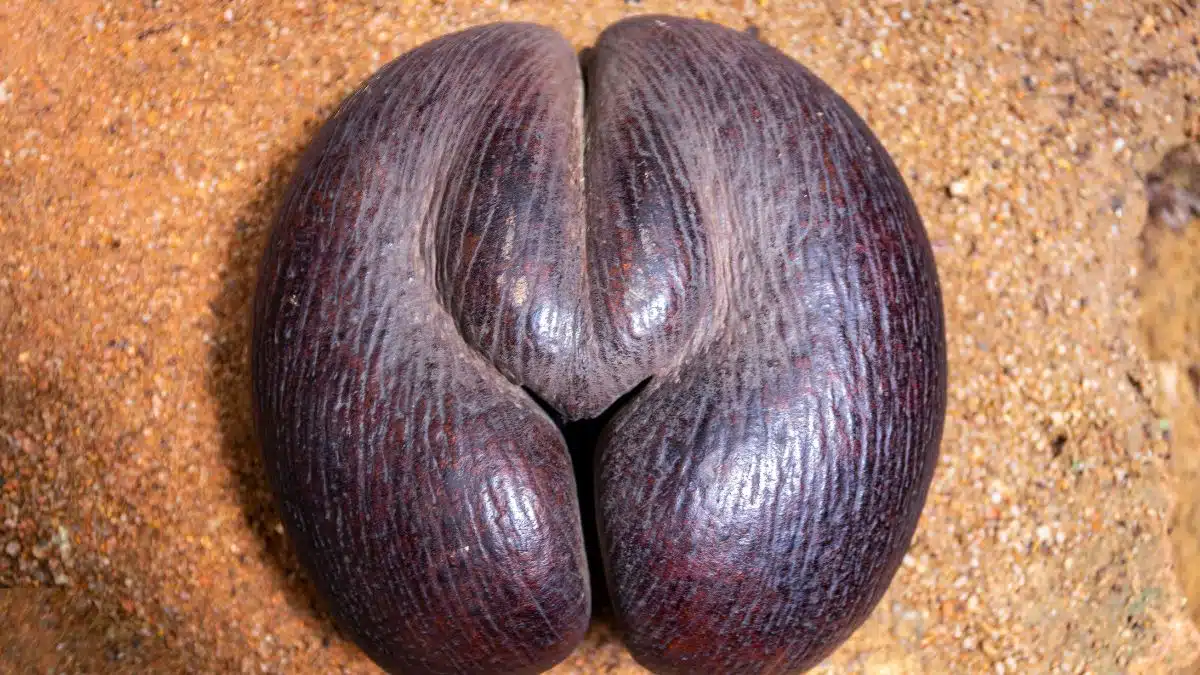
22. Dracontomelon
Dracontomelon is a type of tropical fruit tree that is native to Southeast Asia. The fruit of the Dracontomelon tree is typically small and round, with thin, yellowish-green skin and tart, slightly sour flesh.
This fruit is often used in culinary applications, particularly in Southeast Asian cuisines, and is typically eaten fresh or used in sauces and other dishes.
Dracontomelon is a valued fruit in many parts of Southeast Asia and is known for its unique flavor and versatility in culinary applications. While the fruit may not be as well-known in other parts of the world, it is widely available in many regions and can be enjoyed in a variety of ways.
23. Dragonfruit
Dragonfruit, also known as pitaya, is a type of tropical fruit that is native to Central and South America. The fruit is notable for its unique appearance, with a bright pink or yellowish-red exterior and green, scaly leaves.
Dragonfruit has a sweet and juicy flesh and is typically consumed fresh, either on its own or as an ingredient in smoothies, salads, and other dishes. The fruit is also sometimes used in culinary applications, particularly in Asian and Latin American cuisines.
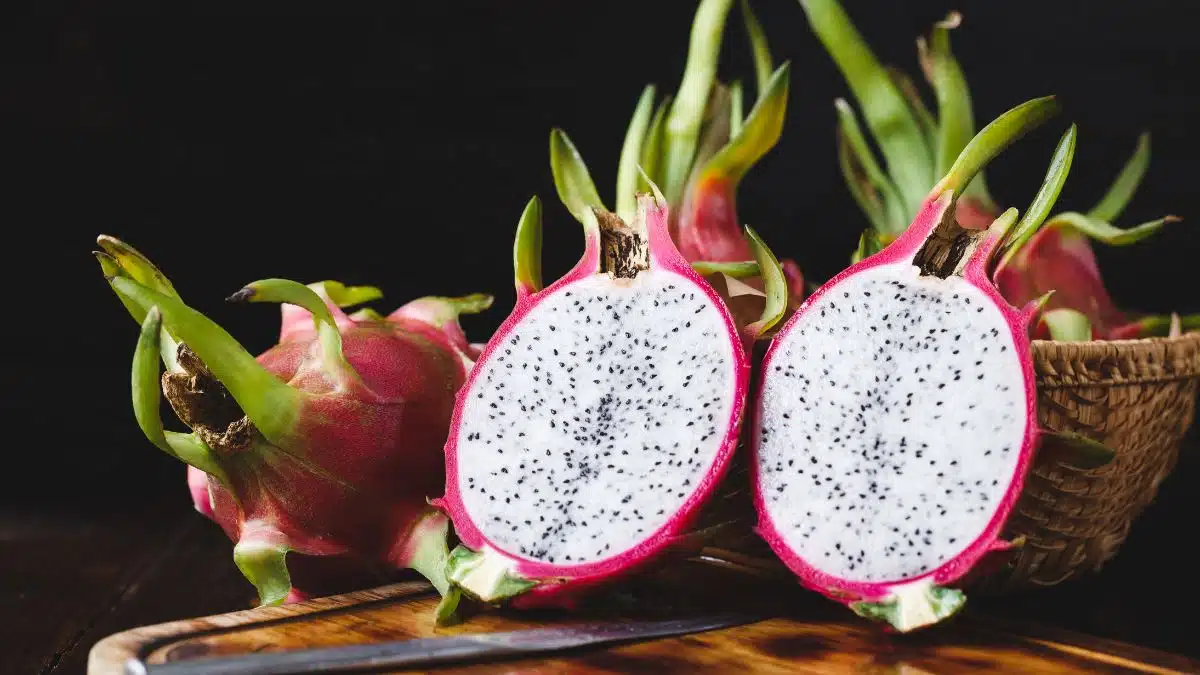
24. Duku Fruit
Duku fruit, also known as langsat, is a type of tropical fruit that is native to Southeast Asia. The fruit is similar in appearance to a small potato, with a thin, leathery skin that is typically light brown or yellow in color.
The flesh of the duku fruit is translucent and sweet, with a texture that is similar to a grape or lychee. The fruit is typically eaten fresh and is also sometimes used in culinary applications, particularly in Southeast Asian cuisines.
Overall, duku fruit is a valued fruit in many parts of Southeast Asia and is known for its unique appearance and sweet, refreshing flavor. While the fruit may not be as well-known in other parts of the world, it is widely available in many regions and can be enjoyed in a variety of ways.
25. Durian
Durian is a type of tropical fruit that is native to Southeast Asia and is known for its distinctive odor and flavor. The fruit has a spiky exterior that is typically green or brown in color, and the flesh is soft and custard-like, with a pale yellow or orange color.
While durian is prized for its unique flavor, which is often described as rich and creamy with a slightly sweet and nutty taste, it is also notorious for its strong and pungent odor. The fruit is often described as having a smell that is similar to onions or garlic and is sometimes even banned from public spaces due to its strong odor.
Durian is typically eaten fresh and is also sometimes used in culinary applications, particularly in Southeast Asian cuisines.
26. Dutch Holland Pear
The Dutch Holland pear is a type of pear that is known for its unique shape and flavor. The fruit is typically small to medium in size, with a round, bell-like shape that is wider at the top than at the bottom. The skin of the Dutch Holland pear is typically smooth and golden-yellow in color, and the flesh is sweet and juicy.
Dutch Holland pears are often eaten fresh and are also commonly used in culinary applications, such as in pies, sauces, and other dishes. The fruit is typically available in the late summer and early fall and is popular in many regions around the world.
Overall, Dutch Holland pears are a flavorful and versatile fruit that is enjoyed by many for its unique appearance and taste. They are widely available in many regions and can be enjoyed in a variety of ways, both as a snack and as an ingredient in a range of culinary dishes.
Fruits that start with the letter "D" include a wide variety of options, ranging from the familiar, such as dates and dragonfruit, to the more uncommon, like duku and durian. Let me know any other fruits that should be included in this list by posting in the comments below!
Do you love a recipe you tried? Please leave a 5-star 🌟rating in the recipe card below and/or a review in the comments section further down the page.
Stay in touch with me through social media @ Pinterest, Facebook, Instagram, or Twitter! Subscribe to the newsletter today (no spam, I promise)! Don't forget to tag me when you try one of my recipes!
📖 Recipe Card
26 Fruits That Start With D: Pear Crisp (+More Tasty Fruits To Use In Recipes!)
Ingredients
- 10 cups pears (peeled, cored, and diced)
- ½ cup white sugar
- 1 tablespoon all-purpose flour
- ½ teaspoon ground cinnamon
- ¼ teaspoon ground nutmeg
- 1 cup quick-cooking oats
- 1 cup all-purpose flour
- ½ cup light brown sugar (packed)
- ¼ teaspoon baking powder
- ¼ teaspoon baking soda
- ½ cup butter (melted)
(Note: 2x or 3x only changes the ingredient list)
Instructions
- Preheat your oven to 350°F (175°C). Peel, core, and dice the pears and place the pears into a medium-sized mixing bowl.
- Add the sugar, 1 tablespoon all-purpose flour, ground cinnamon, and ground nutmeg to the diced pars and stir to coat evenly. Transfer the fruit filling to a 2.5-quart or 9x13 baking dish.
- In a second medium-sized mixing bowl combine the quick oats, 1 cup of all-purpose flour, light brown sugar, baking soda, baking powder, and melted butter. Mix to combine until well-integrated and crumbly.
- Sprinkle the oat mixture over the pear filling in the baking dish. Spread in an even layer over the top of the diced pear filling.
- Bake at 350°F (175°C) for 45-50 minutes until the topping is toasted and golden-brown and the pears are bubbling around the edges.
- Remove your pear crisp from the oven and allow it to cool slightly before serving.
Notes
- The best pears for this pear crisp, or baking in general, are Bosc, Bartlett, or Anjou pears. They are firm enough to hold their shape but still sweet with plenty of flavor. *I used a combination of Bosc and Bartlett as I find that Bosc pears, on their own, can be mild.
- Try not to slice the pears too thin as they break down while baking and you don't want them to disintegrate in the oven.
- If the streusel topping is getting too dark but the pears are not cooked thoroughly, cover the baking dish loosely with foil for the remainder of the cooking time.

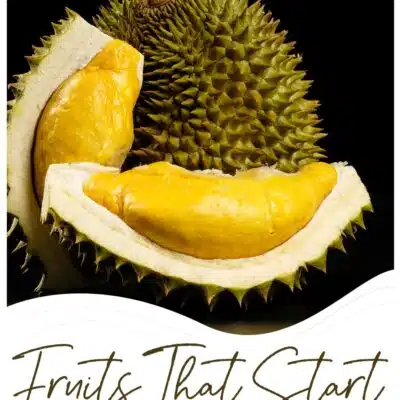

Comments
No Comments